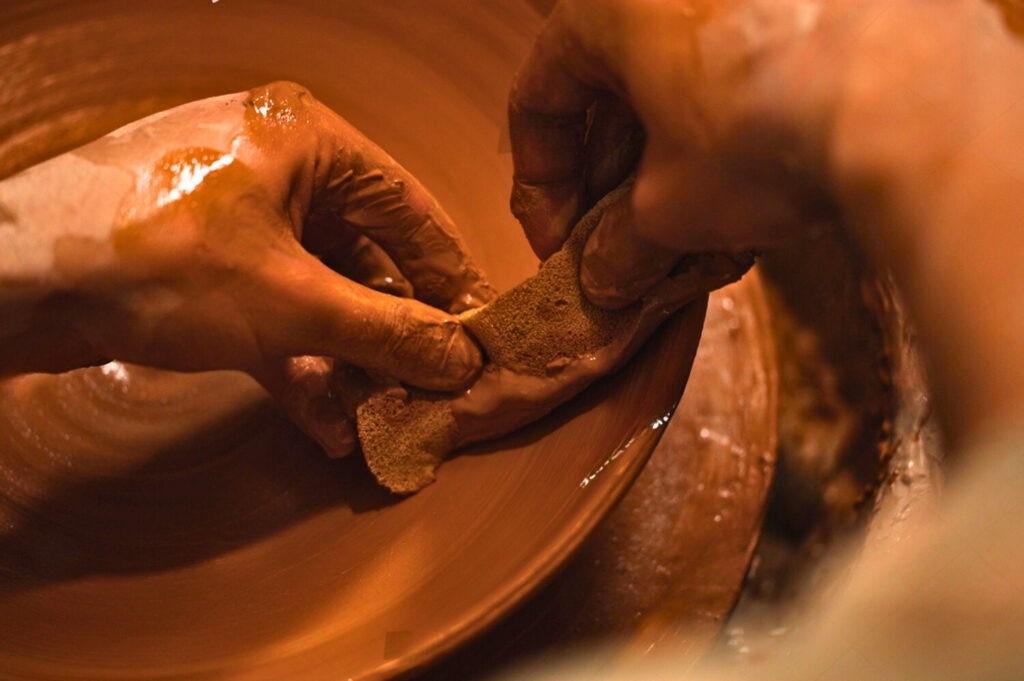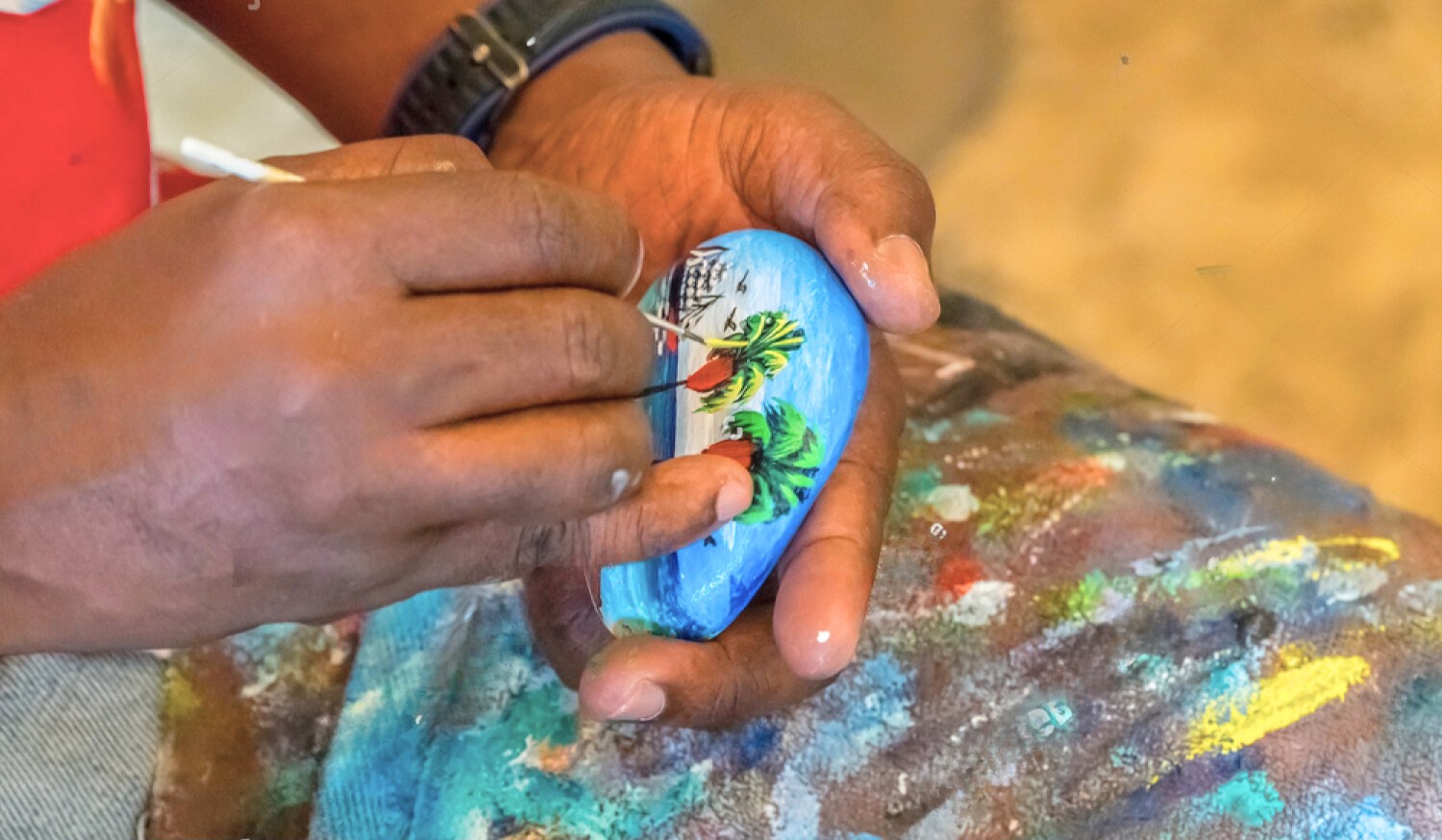Caribbean crafts is a true reflection of the culture and identity of the islands that make up this fascinating region. The hidden treasures of Caribbean craftsmanship reveal age-old techniques and know-how that have been passed down from generation to generation. In this article, we examine the craft traditions of seven Caribbean islands: Saint Lucia, Dominica, Trinidad & Tobago, Barbados, Anguilla, Guadeloupe and Martinique. Each island has its own specificities, local materials and unique techniques, which contribute to the richness of Caribbean craftsmanship.
Caribbean crafts in Saint Lucia
Saint Lucia is an island where Creole culture blends with African, French and British influences. L’Caribbean crafts here is rich and varied, from pottery to wood carvings.
Ancestral techniques
Saint Lucia’s artisans are renowned for their pottery skills. They use local clay to create pieces that reflect the island’s landscapes and wildlife. Hand-molding and firing in traditional kilns produce ceramics of the highest quality.
Wooden sculptures, often made from coconut wood, are also emblematic of Caribbean craftsmanship. These works, which depict characters and scenes from daily life, are often adorned with motifs that tell local stories.

Caribbean crafts in Dominica
Dominica, nicknamed “the nature island”, is known for its exceptional biodiversity and nature-related Caribbean crafts. Dominican artisans exploit the island’s natural resources to create unique works of art.
Traditional know-how
One of the most popular skills in Dominica is weaving plant fibers. Craftsmen use banana fibers to create baskets, hats and other utilitarian objects. This technique, which requires great skill and a thorough knowledge of plants, is handed down from mother to daughter.
Dominica is also famous for its wooden creations. Artisans carve decorative objects from local wood, often using hand-carving techniques. Relief motifs often depict elements of local flora and fauna.
Trinidad and Tobago: a cultural mix
Trinidad and Tobago is an archipelago of diverse cultural influences, including African, Indian and European. This diversity is reflected in the rich variety of local Caribbean crafts.
Metal crafts
Trinidad’s craftsmen are particularly renowned for their metalwork, including the creation of handmade jewelry from recycled materials. This demonstrates an innovative approach that combines tradition and sustainability. Artisans use forging and soldering techniques to create unique pieces, often inspired by local culture.
Trinidad pottery, with its floral and geometric motifs, is also highly prized. Artisans use traditional firing methods to give a unique touch to each piece.
Barbados: Refined creations
Barbados is famous for its craftsmen who create refined works, from pottery to basketry. Caribbean crafts are often influenced by British traditions, while incorporating local elements.
Pottery techniques
Barbadian potters use throwing and glazing techniques to create pieces that combine aesthetics and functionality. Patterns inspired by seascapes and tropical flowers are common in their creations. The artisans also use natural materials to color their work, giving it a unique authenticity.
Basketry is also an important aspect of the Caribbean craftsmanship Barbadian craftsmanship. Craftsmen create baskets, hats and decorative objects using traditional techniques, often using materials such as palm leaves.
Anguilla: The art of basketry
Anguilla, though small, is rich in artisan traditions, particularly in the field of basketry. The island’s artisans are renowned for their skill in creating utilitarian and decorative objects from natural materials.
Basketry know-how
Basketry in Anguilla uses mainly palm leaves, which are woven into baskets and hats. This skill requires an acute sense of detail and a deep respect for nature. The craftsmen are proud to pass on these techniques to younger generations, ensuring the continuity of this art.
In addition to basketry, Anguilla’s craftsmen also create wooden objects, often inspired by the island’s natural landscape. Wooden sculptures and furniture are examples of the creativity and ingenuity of local craftsmen.
Guadeloupe: Between land and sea
Guadeloupe, with its rich biodiversity, inspires many artisans. They create a variety of objects from shell jewelry to colorful textiles.
Creative techniques
Guadeloupean artisans are particularly renowned for their work with shells and driftwood, creating jewelry and decorative objects. The use of natural and recycled materials is a growing trend, reflecting increasing environmental awareness.
Handmade textiles, often hand-dyed, are also an important aspect of Guadeloupe’s Caribbean craftsmanship. Colorful motifs and designs inspired by Creole culture make these pieces unique and highly prized.
Martinique: A cultural heritage
Martinique is the cradle of a rich and varied Caribbean craft industry, where ancestral techniques have been preserved. Martinican artisans are renowned for their creations in textiles, pottery and sculpture.
Textile crafts
Batik is a textile dyeing technique that is particularly popular in Martinique. Artisans use traditional methods to create colorful designs that evoke nature and local culture. Each piece is unique, making them works of art in their own right.
Pottery is also a well-established tradition in Martinique. Potters create works of art that combine aesthetics and functionality, often inspired by the island’s landscapes and Creole traditions.
The hidden treasures of Caribbean craftsmanship are not just objets d’art, but witnesses to a rich history and living culture. Every Caribbean island, from St. Lucia to Martinique, contributes to the richness of Caribbean craftsmanship through its unique techniques and know-how. By supporting these craftsmen and their creations, we are helping to preserve a priceless cultural heritage.






































